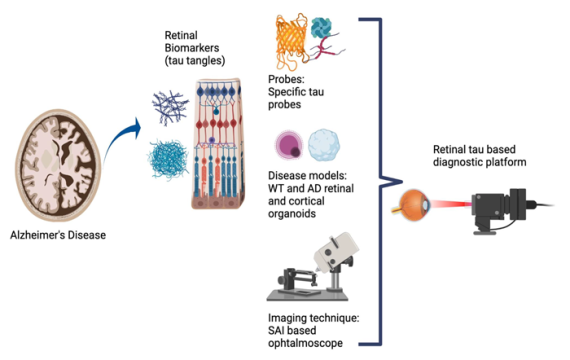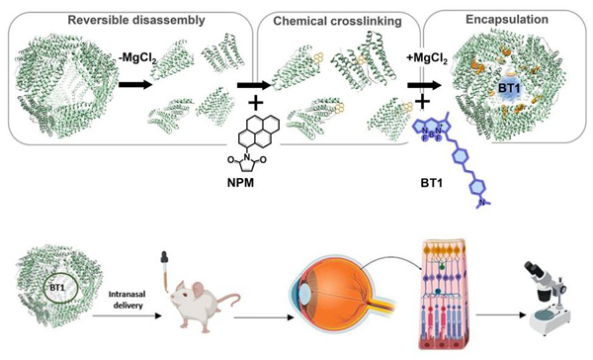Project
Retina Observation for Alzheimer Diagnostic
Neurodegenerative diseases (NDs) are a group of disorders characterized by the progressive degeneration of the structure and function of the nervous system. This category of diseases includes well-known conditions such as Alzheimer's disease, Parkinson's disease, amyotrophic lateral sclerosis (ALS), Huntington's disease, and many others. The societal burden associated with neurodegenerative diseases is immense and multifaceted, impacting individuals, families, healthcare systems, and economies worldwide.
What is notably lacking in the field of neurodegenerative diseases, including Alzheimer's Disease (AD), is a diagnostic tool that can effectively and non-invasively measure disease progression in longitudinal studies.
Two parallel ROADs

Realization of a super resolution ophtalmoscope, capable of measuring the morphologies of the in-vivo human retina with the resolution of 300 nm

Development and pre-clinical testing of delivery methods for the specific TAU protein ligand, named BT1 (patent filed)
Impact
The development of a diagnostic tool that meets the criteria of being objective, cost-effective, and minimally invasive would be a game-changer in the field of neurodegenerative diseases. Such a tool could revolutionize early diagnosis, monitoring, and treatment assessment, ultimately improving the lives of individuals affected by these devastating conditions and advancing research efforts towards finding effective therapies.
By combining BT1 ligand with the ROAD instrument, we aim to identify protein aggregations associated with Alzheimer's disease. This approach has the potential to pave the way for early diagnosis of Alzheimer's disease, potentially detecting it as early as 20 years before the onset of cognitive impairment.